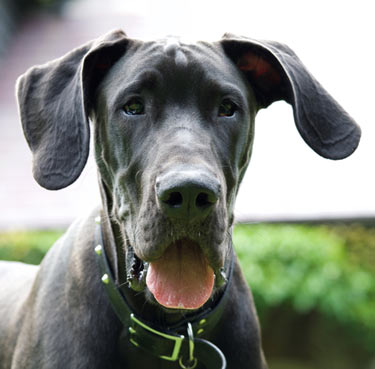Signs of Hip Dysplasia in Dogs

Hip dysplasia is a congenital disorder in dogs in which the joint is not formed properly. Over time, this conformation results in pain and arthritis. It is seen more often in large breed dogs, but it can occur in any dog. Signs may not develop until middle age or beyond, but some dogs with severe dysplasia begin showing signs in puppyhood.
Knowing what to look for can help you get to the vet and get your dog's hip dysplasia diagnosed earlier, which may allow for greater treatment options.
Decreased Activity
Dogs with hip dysplasia develop pain over time. That pain usually translates to a dog that becomes noticeably less active. Your dog may sleep more, be less interested in activities that he used to enjoy, and generally not move around as much.
Owners tend to write off decreased activity as a normal sign of aging. However, age is not a disease, and there's always some cause for these types of signs. In the case of hip dysplasia, hip pain causes a major decrease in activity.
Difficulty Rising from a Lying Position
Dogs with hip dysplasia often have a hard time getting up after they've been lying down for a while. This is often most noticeable in the morning.
Also, dogs trying to get up from a lying position on a slippery surface such as a hardwood floor or linoleum often have a more difficult time than when they are lying on carpet.
Bunny Hopping
Some dogs with hip dysplasia develop a bunny hopping gait. When they are running, climbing, or even walking, they may move their hind legs together rather than separately. This may decrease the pain coming from their hips.
Avoidance of Stairs and Jumping
Often, one of the first things that owners of dogs with hip dysplasia notice is a reluctance to climb stairs or jump up on things they used to jump on routinely. The need to transfer weight to the back legs during climbing and jumping causes extra pain in a dog with hip dysplasia.
Rear Leg Limping
Dogs with hip dysplasia often limp intermittently on one or both hind legs. They may also show signs of pain or discomfort when their hips, rump, or rear legs are touched.
If you see any of these signs in your dog, make an appointment with your veterinarian. An x-ray can help differentiate hip dysplasia from other conditions that can cause these signs.
You can learn more, including how hip dysplasia is treated, here: "Hip Dysplasia in Dogs."
You May Also Like These Articles:
Dr. Google: Helpful or Dangerous?
General Tips for Keeping Your Dog Safe
You Have E-Mail; Your Dog Has P-Mail
Legg-Calve-Perthes Disease in Dogs
IVDD: Intervertebral Disc Disease in Dogs
Panosteitis in Dogs: Growing Pains
Osteochondritis Dessicans of the Humeral Condyle (OCD)
Disclaimer: This website is not intended to replace professional consultation, diagnosis, or treatment by a licensed veterinarian. If you require any veterinary related advice, contact your veterinarian promptly. Information at DogHealth.com is exclusively of a general reference nature. Do not disregard veterinary advice or delay treatment as a result of accessing information at this site. Just Answer is an external service not affiliated with DogHealth.com.


